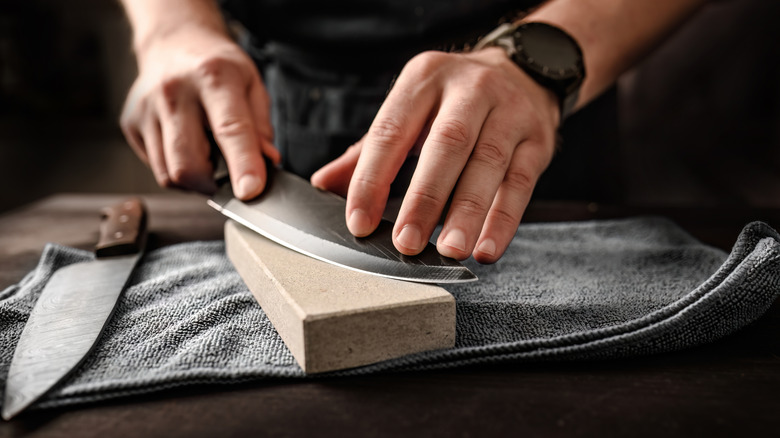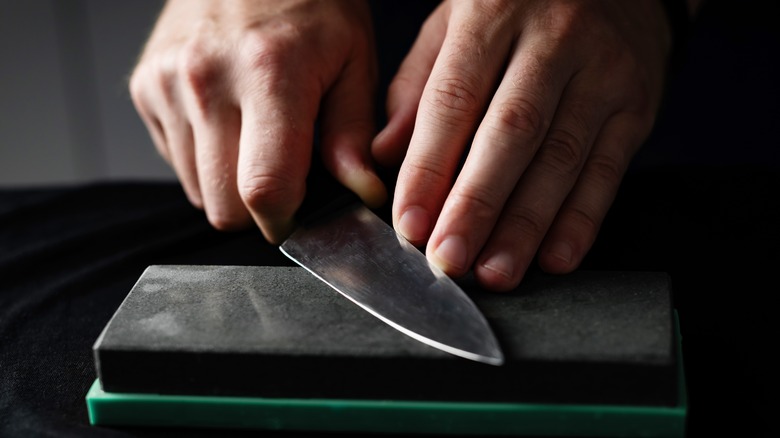Top Reasons To Consider Buying A Sharpening Stone (& What To Shop For)
We may receive a commission on purchases made from links.
For those who like to cook, a special satisfaction comes from using a freshly sharpened knife. It cuts through everything — from tomatoes to watermelon — with such ease that it's practically like slicing butter. A dull knife, on the other hand — good luck not squishing those tomatoes. And while it might seem counterintuitive, a dull knife is far more dangerous than a sharp knife. A sharp knife is easier to control. As you will need more pressure to cut with a dull knife, there's a greater chance that the knife will slip and cause injury.
How often you need to sharpen your knives depends on how often you use them, with experts saying anywhere from once a month to a few times a year. You will know your knife needs to be sharpened when you can no longer cut ingredients in a single stroke, when you notice yourself using the tip of the knife to make the initial cut, and when soft fruits and vegetables become squished as you try to cut them. However, there's no need to call your local knife sharpener. You can easily and effectively sharpen your knives at home with a sharpening stone.
Sharpening stones, also known as whetstones, are made from both natural and synthetic stones. When wet, the stone acts like sand, sharpening the knife while allowing movement, resulting in the least amount of metal shedding. This is in contrast to a traditional knife sharpener, which, while potentially easier to use, removes more metal from the knife, ultimately causing damage over time.
What type of sharpening stone is right for you?
Sharpening stones typically come in three main levels of grit, with lower levels of grit meaning the stone has larger abrasive particles. Coarse stone has a grain size of roughly 220 to 600 grit and is ideal for sharpening as well as for removing cracks and chips from the blade. Medium-grit stone has a range of 600 to 1,000, removing less material than coarse stone. And fine-grit stone has a range of 1,000 to 3,000, removing the least amount of metal.
In addition to different levels of grit, there are three main types of sharpening stones: oil stones, water stones, and diamond stones. Of the three, diamond stones are considered the gold standard and are favored by chefs and other cooking professionals. They utilize newer technology and are fast-cutting, durable, and easy to maintain.
If you want to try a sharpening stone so you don't have to sharpen your kitchen knives on a coffee mug, a popular option is the Sharpal double-sided diamond sharpening stone, which features both coarse and fine grit and can be ordered from Amazon for $44.99. DMT is also a trusted brand and offers diamond sharpening stones in a variety of grits ranging from $56.99 to $115.69.
In addition to using sharpening stones, there are several other things you can do to elongate your knife's lifespan, including avoiding using a knife block. While sharpening stones will achieve ideal results, there is a certain technique to using them, which takes some practice. In addition to reading your sharpening stone's instructions, we recommend watching a YouTube tutorial, like this beginner's guide from Knives and Tools.

